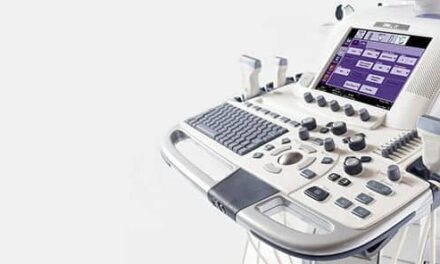Below, David Brennan, senior vice president, clinical solutions, at PartsSource, breaks down the complex medical equipment parts sector. The conversation delves into the adaptation strategies to supply disruptions, the impact of the ongoing COVID-19 pandemic, the role of 3D printing, and the fundamental focus on patient outcomes that drives the industry. Don’t miss out.
24×7: How is your company adapting to the ongoing supply chain disruptions caused by factors such as port congestion, weather events, and geopolitics?
David Brennan: First, the good news is that shipping costs and port congestion are showing strong signs of normalization. As to our response, we help clients navigate the disruptions by leveraging our strong supplier partner relationships and unique business model as a provider of evidence-based insights to secure mission-critical supplies and services. We are seeing a positive shift in the conversations. Customers from the technician level to C-suite are engaging in conversations regarding supply chain resiliency. Inevitably, this conversation leads to discussions of which partners are truly engaged in active supply chain management versus those that have a more passive approach.
As the pioneer of evidence-based vendor and quality management within the clinical engineering/HTM space, our Supplier Risk Monitoring trend analysis continues to empower our customers to proactively drive equipment availability, execute strategic stocking for critical stock keeping units (SKUs), and drive formulary cost controls across their distributed teams.
24×7: What steps are being taken to increase sustainability and mitigate short-term material shortages in the medical equipment parts market?
Brennan: On a day-to-day basis, we see HTM teams—those tasked with the support of the most mission-critical assets—forced to be smarter with their spending and choosing programs and partners that lead with data. Why? Because leaders who operate top-tier HTM programs understand that they have limited levers at their disposal. They understand that they must free up money for their most critical challenges, optimize the critical (scarce) labor they have, and simultaneously drive equipment availability. They understand these three levers expand financial capacity, labor capacity, and clinical capacity. They also know that these levers require data-driven decision making to be employed correctly.
We help these leaders access the data with purpose-built technology tools, including visual analytics, missed savings reporting, vendor risk monitoring, and guaranteed stocking programs—all designed to increase sustainability and mitigate the impacts of short-term material shortages. Given that we work closely with thousands of suppliers, we can say confidently that they are taking active steps to shore up operational weakness (i.e., single-threaded part supply or poor planning/forecasting) or systemic weakness (i.e., raw material scarcity or demand spikes). This enables our team to make strategic stocking decisions or share challenges with our PartsSource Pro Customer Community.
24×7: What impact has the COVID-19 pandemic had on the medical equipment parts market, and have supply chain issues improved since then?
Brennan: Three years into the pandemic, you would think that we as an industry would have solved this. Unfortunately, this is still a very relevant question. I believe most of us held out hope that our largest players with truly global footprints and networks of supply chain experts would have wrestled this problem to the ground, but our data tells another story.
Backorders for most vendors continue to emerge. On a basket basis, backorders from the top suppliers in the U.S. have grown more than 12%, year-over-year, and are still two-to-three times pre-COVID levels. There are notable exceptions, including one large OEM that is dramatically more vertically integrated than its peers. In this case, its strategy shines through with a dramatically better backlog performance over the last 24 months.
The reaction I see in our customer base is in the form of a renewed focus on business continuity and resiliency. I see teams funding new strategies through savings achieved via changes to their portfolio of contracts. And we are working shoulder to shoulder with our customers to make some of these critical decisions based on 20-plus years of cost-of-service data that we have amassed and released. As the old saying goes, you can’t change the direction of the wind, but you can adjust your sails.
24×7: What impact has 3D printing had on the medical equipment parts sector, and what are the limitations to its application?
Brennan: I’ve been asked this question before, and I like it because I am very bullish on 3D printing. The prospect of “just-in-time” parts through “additive manufacturing” is truly compelling. The idea that a manufacturer could find a cost-advantaged solution that would allow for dramatic “retail” price reductions or that HTM teams could print parts onsite to OEM standards is exciting to imagine.
That said, the path from manufacturer pilot programs or true OEM specifications to your doorstep is a complicated one, and one that might take some time to play out. Consider the many challenges, from intellectual property rights, quality controls, clinical validation procedures, to the challenges of multi-material parts or subassemblies. My bet is that we are still a way off from the mission-critical parts our customers consume. But in the near term, I expect very fast-paced advancement in the areas of prosthetics, implants, and similar single-material custom medical applications, where economies of scale take a back seat.
24×7: How is your company managing backlogged demand and ensuring clinical availability during supply chain disruptions?
Brennan: Ensuring clinical availability is core to who we are. As a provider of evidence-based insights into mission-critical supplies, both parts and labor, our role is to ensure clinical availability, reduce costs, and standardize workflows to drive efficiency for our customers. This means that, behind the scenes, we must work extremely closely with our supplier partners to ensure that market information flows both ways.
We have a dedicated team that works with our supplier partners daily to solve problems and share their relative market performance versus demand and/or our forecasts. We can’t resolve raw material shortages in smart batteries, for example, but we can share our market analytics. This allows us to co-manage strategic stocks or place orders based on the shape of our data, to assure a strong supply chain for our mutual customers.
24×7: What else should 24×7 readers know about the medical equipment parts sector?
Brennan: It’s extremely tough work, with numerous factors driving up costs and reducing efficiencies, but I’m convinced there is a smarter way. A focus on evidence-based decision making, standardized workflows, and systems integrations will improve the productivity of HTM teams, adding more human capacity to organizations. I’m also convinced that systemic risk reduction and compliance controls can return significant operating capital to your business, improving the financial capacity of organizations. Finally, high quality, combined with highly resilient supply chains, can improve availability of mission-critical assets, creating greater clinical capacity.
There are few who can claim to have this breadth and depth of this vision, coupled with digital workflows and formulaic control mechanisms to drive real return on investment. That said, when done correctly, you can free up human capacity, financial capacity, and clinical capacity, which, together, drives what we care about most: patient outcomes.





